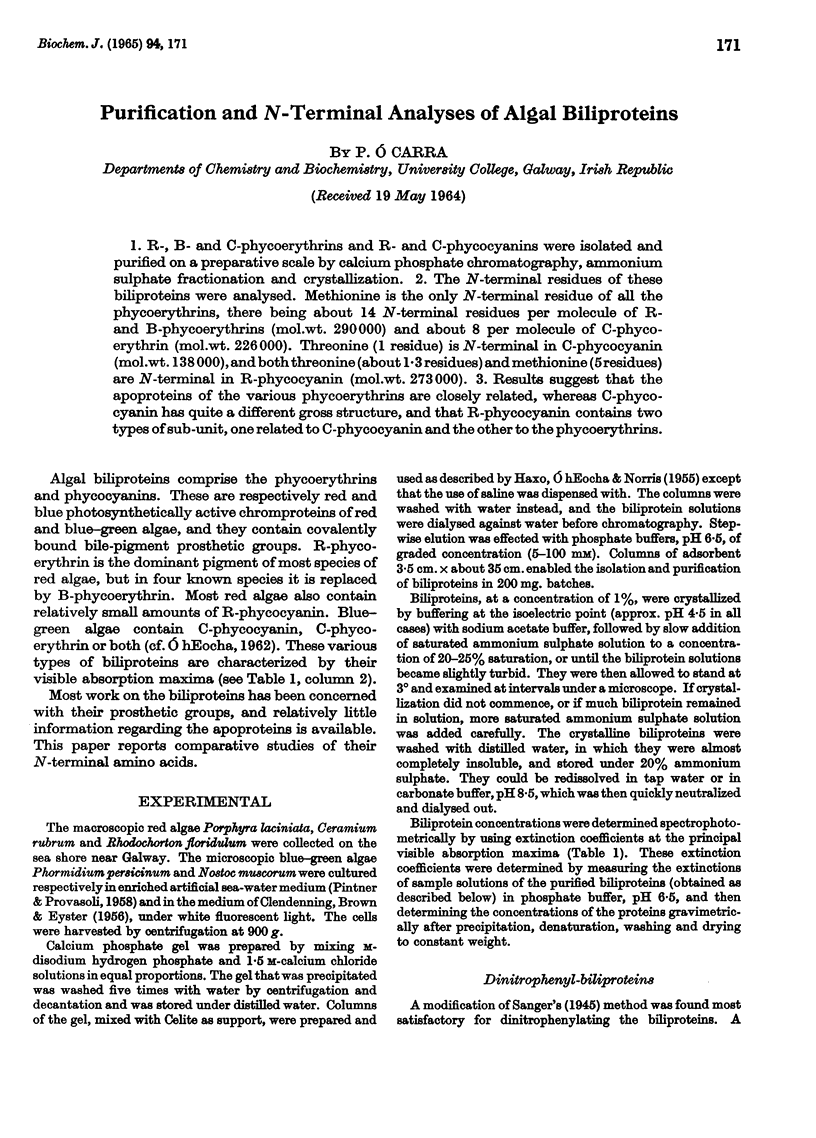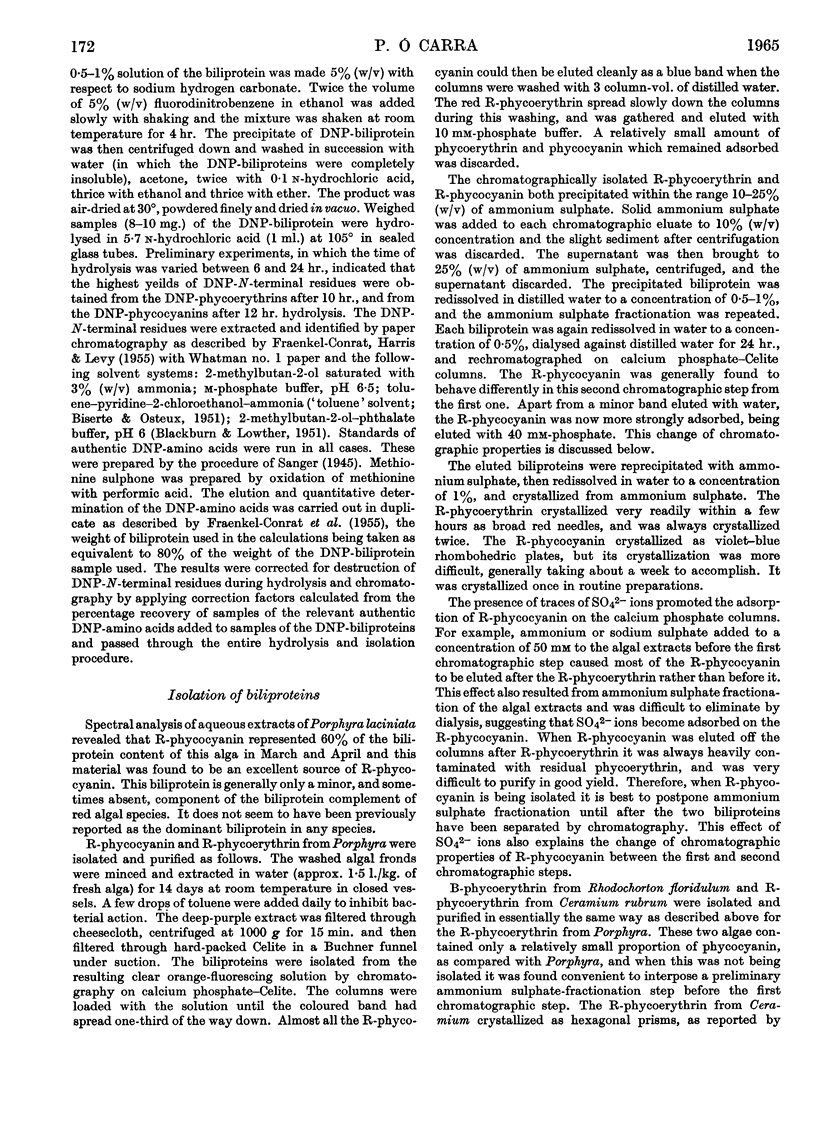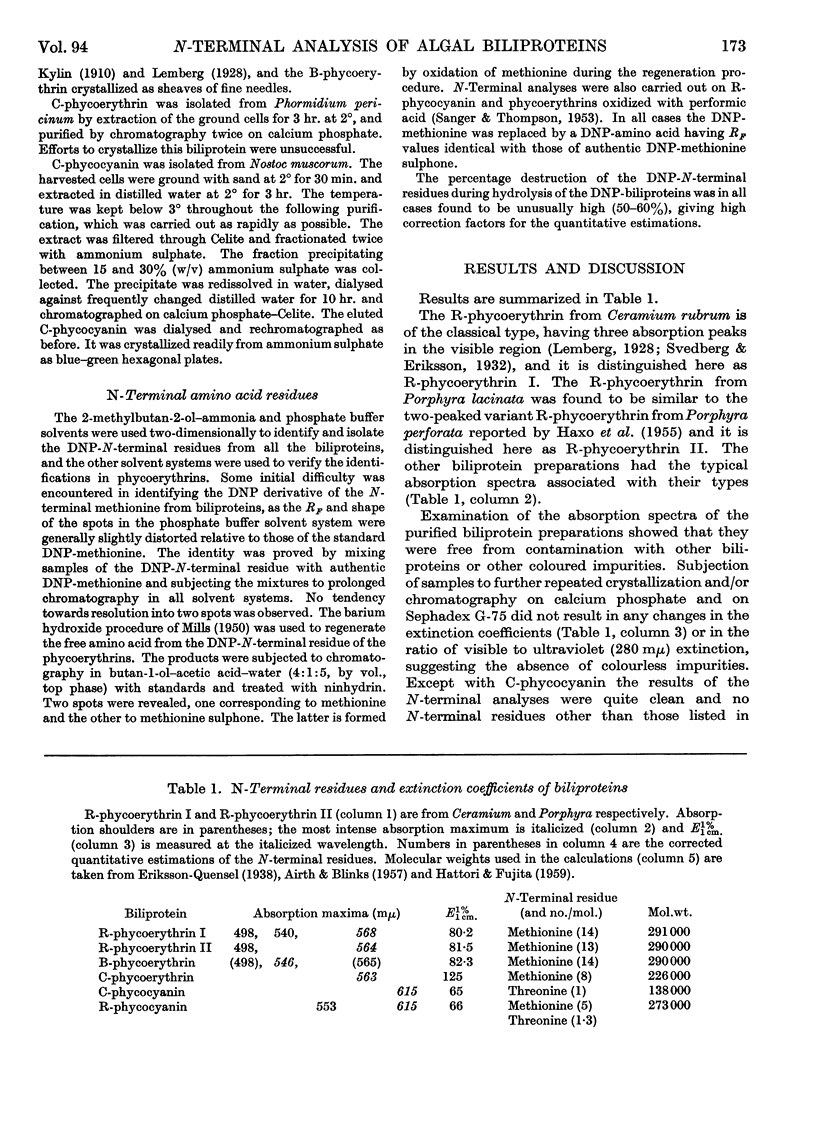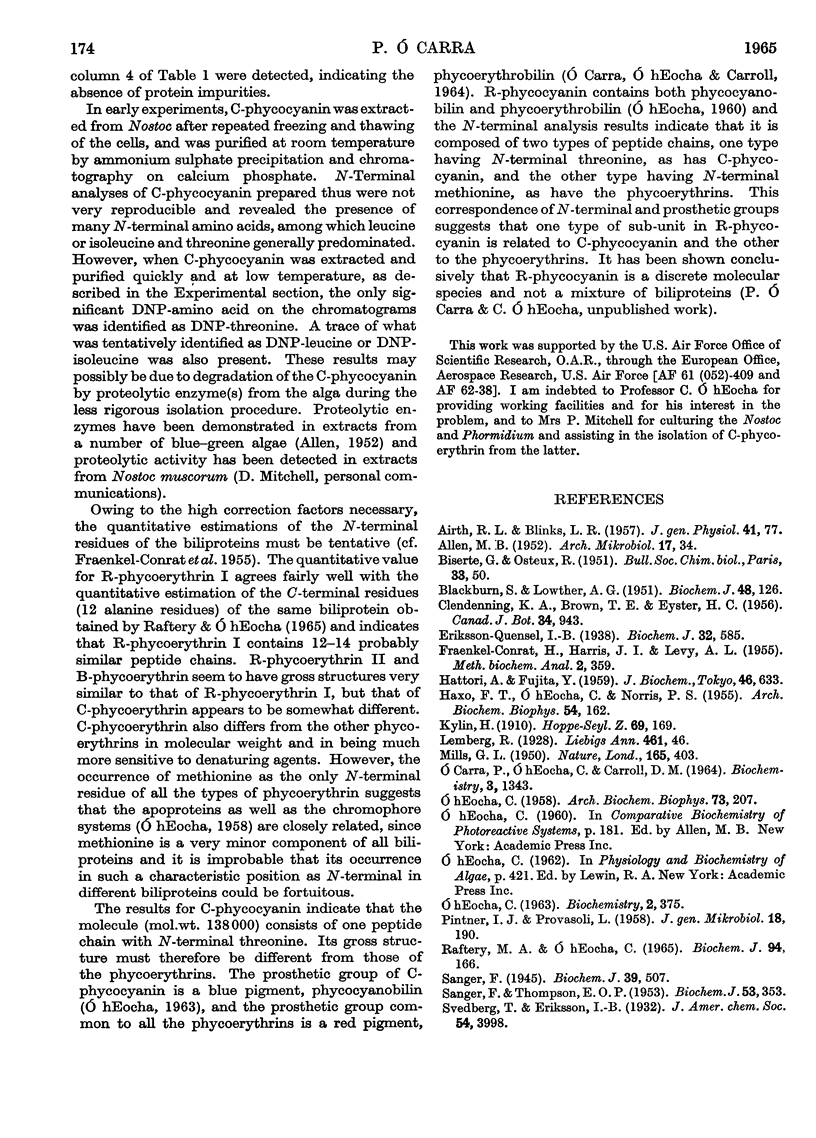Abstract
1. R-, B- and C-phycoerythrins and R- and C-phycocyanins were isolated and purified on a preparative scale by calcium phosphate chromatography, ammonium sulphate fractionation and crystallization. 2. The N-terminal residues of these biliproteins were analysed. Methionine is the only N-terminal residue of all the phycoerythrins, there being about 14 N-terminal residues per molecule of R- and B-phycoerythrins (mol.wt. 290000) and about 8 per molecule of C-phycoerythrin (mol.wt. 226000). Threonine (1 residue) is N-terminal in C-phycocyanin (mol.wt. 138000), and both threonine (about 1·3 residues) and methionine (5 residues) are N-terminal in R-phycocyanin (mol.wt. 273000). 3. Results suggest that the apoproteins of the various phycoerythrins are closely related, whereas C-phycocyanin has quite a different gross structure, and that R-phycocyanin contains two types of sub-unit, one related to C-phycocyanin and the other to the phycoerythrins.
Full text
PDF



Selected References
These references are in PubMed. This may not be the complete list of references from this article.
- AIRTH R. L., BLINKS L. R. Properties of phycobilins from Porphyra naiadum. J Gen Physiol. 1957 Sep 20;41(1):77–90. doi: 10.1085/jgp.41.1.77. [DOI] [PMC free article] [PubMed] [Google Scholar]
- BLACKBURN S., LOWTHER A. G. The separation of N-2:4-dinitrophenly amino-acids on paper chromatograms. Biochem J. 1951 Jan;48(1):126–128. doi: 10.1042/bj0480126. [DOI] [PMC free article] [PubMed] [Google Scholar]
- Eriksson-Quensel I. B. The molecular weights of phycoerythrin and phycocyan. I. Biochem J. 1938 Mar;32(3):585–589. doi: 10.1042/bj0320585. [DOI] [PMC free article] [PubMed] [Google Scholar]
- FRAENKEL-CONRAT H., HARRIS J. I., LEVY A. L. Recent developments in techniques for terminal and sequence studies in peptides and proteins. Methods Biochem Anal. 1955;2:359–425. doi: 10.1002/9780470110188.ch12. [DOI] [PubMed] [Google Scholar]
- HAXO F., O'HEOCHA C., NORRIS P. Comparative studies of chromatographically separated phycoerythrins and phycocyanins. Arch Biochem Biophys. 1955 Jan;54(1):162–173. doi: 10.1016/0003-9861(55)90019-9. [DOI] [PubMed] [Google Scholar]
- PINTNER I. J., PROVASOLI L. Artificial cultivation of a red-pigmented marine blue-green alga, Phormidium persicinum. J Gen Microbiol. 1958 Feb;18(1):190–197. doi: 10.1099/00221287-18-1-190. [DOI] [PubMed] [Google Scholar]
- SANGER F., THOMPSON E. O. P. The amino-acid sequence in the glycyl chain of insulin. I. The identification of lower peptides from partial hydrolysates. Biochem J. 1953 Feb;53(3):353–366. doi: 10.1042/bj0530353. [DOI] [PMC free article] [PubMed] [Google Scholar]
- Sanger F. The free amino groups of insulin. Biochem J. 1945;39(5):507–515. doi: 10.1042/bj0390507. [DOI] [PMC free article] [PubMed] [Google Scholar]


